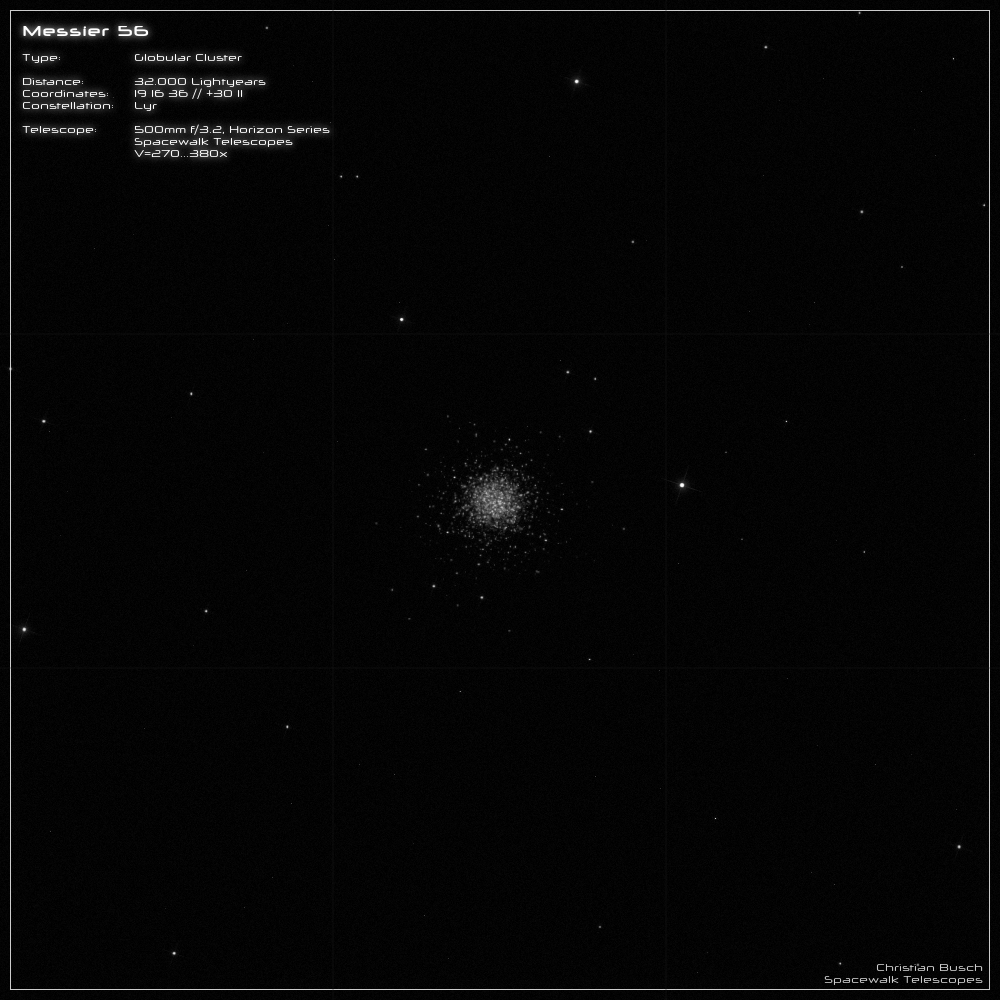Messier 56 - Globular Cluster
The globular star cluster Messier 56, with an apparent magnitude of 8.3mag and an angular extent of 8.8', is located in the constellation Lyra and was
discovered by Charles Messier in January 1779. It can be best observed on a warm summer night and is visible even with small binoculars. In addition, it
is easy to find because M56 is located approximately in the middle of the Albireo - Gammy Lyr axis.
Messier 56 has a diameter of 85 light-years and belongs to concentration class X (a measure of the increase in star density towards the center). The tidal
radius is 316 light-years - so up to this distance the stars are still gravitationally bound to the globular cluster. This radius naturally depends on the mass
of the cluster and its distance from the Milky Way.
The absolute magnitude is M= -7.3mag, which corresponds to a luminosity of 71,000 suns. The total mass is estimated at 190,000 - 230,000 solar masses.
The brightest stars in M56 are 13mag bright, which is equivalent to a luminosity of 550 suns or an absolute magnitude of M= -2.0mag. Their metallicity is
only 1% of that of the Sun, which indicates that Messier 56 is more than 13 billion years old. It is assumed that the globular cluster did not form together
with our Milky Way, but rather was snatched from it during the capture of a dwarf galaxy. This is also supported by the retrograde orbit of Messier 56.
The globular cluster is currently moving towards us at a speed of v = -136km/s and comes one light-year closer to Earth every 2,250 years.
----------------------------------------------------------------------------------------------------------------------------------------------
On a clear, warm summer night, I was able to observe Messier 56 with my 20” f/3 telescope. It was visible in the dense summer milky way even in the 8x50
finder as a dull patch of light.
At a magnification of 120x, I was able to resolve the globular cluster both in the outer areas and in the center. The most beautiful view was naturally at
380x. The center of M56 appears only slightly brighter - but that was to be expected (concentration class X). In addition, the core area is quite large
compared to the halo. Overall, the cluster is rather bright, but the surface brightness is fairly low compared to other globular clusters in the summer sky.
A somewhat brighter star to the west of the cluster provides a nice contrast.

